With the New Year came CES, the largest consumer electronics expo in North America. We traveled to Las Vegas to attend the event and bring you the scoop on some of the latest products from the main players in the computing world.
As it's becoming more common, the majority of big announcements were made even before the show started as every company tried to jump ahead each other in order to grab everybody's attention. This year wasn't the exception and in fact the few major announcements made throughout the week were promptly taken care of in our regular news coverage. Thus this article is not meant to be a memory refresher, but to give you a brief outlook on what we observed and what caught our attention during the show.

By far the most organized and productive meeting we had the whole week was with the guys at AMD/ATI. As you are well aware, the company has been pushing its Radeon HD 5000 series desktop graphics cards for some time now. Last week they announced they had shipped its two millionth DirectX 11-capable GPU, officially overcoming the short supply issues from last year. This will open the door for more graphics cards in the 5000 series, filling the gap in the budget market where previous generation HD 4000 boards were pulling the trick for the moment.
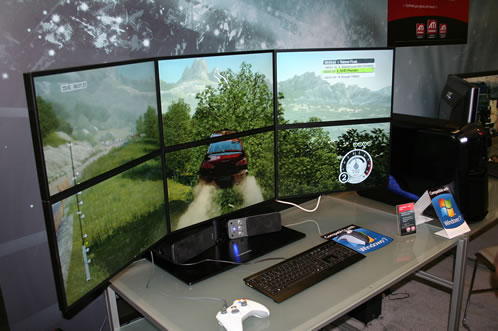
New Mobility Radeon chips derived from its desktop counterparts were announced along with design wins from nearly every major notebook manufacturer. This translates into mobile support for Eyefinity and DX11, with the top of the line Mobility Radeon HD 5870 expected to perform at the level of a desktop 5700 series card.
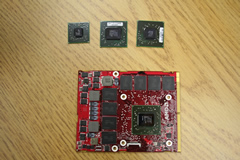
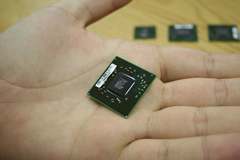
AMD was showcasing different scenarios where GPU features were being used. Most impressive were 3 and 6 screen Eyefinity setups running smoothly in a number of games. There was also a prototype XGP (External Graphics Platform) box using the new Mobility Radeon HD 5870 GPU running Tom Clancy's HAWX in three screens. We asked AMD about the status of XGP and the reason it hasn't been supported as widely as we hoped - for now it's been limited to a few European markets. Ultimately, they said they depend on manufacturers to pick up the technology and offer it along with laptops since the box requires a proprietary connection based on PCI Express. The latest version of XGP can support three external displays when used with DisplayPort monitors.

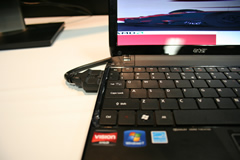
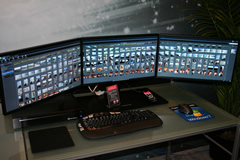
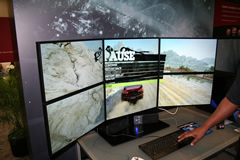
Also in the AMD briefing room, we met with a representative for Ostendo Technologies. You probably won't know them by name, but these are the guys who developed the curved display technology previously shown by Alienware and NEC. They have taken the display to market themselves under their own brand and most impressively, they had three of these magnificent 43-inch displays (2880x900 resolution each) hooked up to a latest generation Radeon board. The result was an immersive 180-degree experience of gaming goodness.
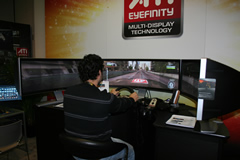
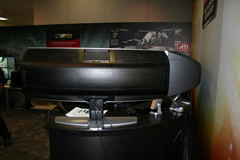
Besides gaming, I tried using a single curved display in Windows to see how productivity applications looked like in this screen. The result was decent enough, but unfortunately it won't match the sharpness of your regular LCD monitor.
If you've been reading TechSpot long enough, you will know we are big fans of quality input devices and that doesn't necessarily mean the bells and whistles, but how functional and ergonomic a device can be. A good part of our staff swears by Microsoft's Natural Ergonomic keyboard, so when we saw a little startup named Smartfish showing a new product in this category we had to take a look.
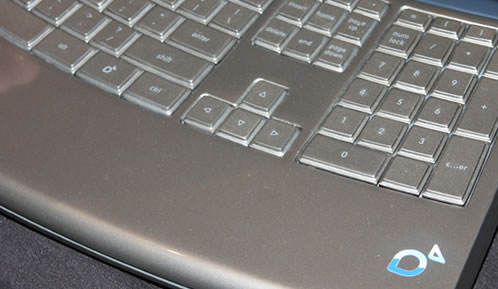
The Ergomotion keyboard is supposed to prevent repetitive strain injuries (RSI) by subtly moving the two keyboard panels to the sides – it's broken in two like the Microsoft Natural – and tilting it slightly back and forth when it recognizes repetitive typing patterns. We couldn't test the keyboard for long, nor could we bring one with us for testing, but I would say it looks compelling enough to take a closer look when it ships in March, hopefully at a decent price.